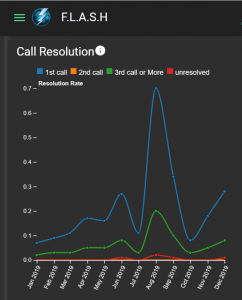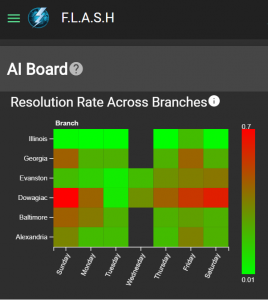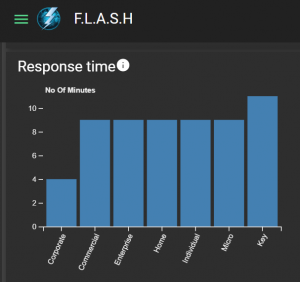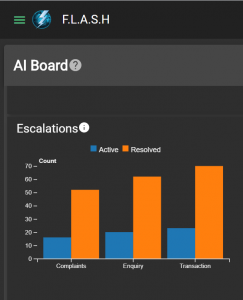With huge quantities of data generated every day, and sophisticated algorithms fuelling data modeling, we look at the scope of the expanding AI market in North America. In our monthly Feature corner, our Co-Founder and Senior Vice President, Mr. J. S. Sridharan asks a few questions to Mr. Pat Krishnan, a seasoned C Level executive, from Bay Area, California, who has worked with leading organizations with disruptive technologies and has also provided strategic direction and leadership to various organizations in India and the US.
Sridharan – Having worked in AI, cybersecurity, analytics, and various other innovative ideas, please tell us how the pre-COVID and future priorities are changing for organizations in terms of adopting technologies like AI.
Pat Krishnan – AI as one knows is the “mantra” for every organization and every domain such as healthcare, cybersecurity, retail, financial to name a few. I think the market has been growing regardless of the COVID situation as far as AI goes. With COVID-19 and scientific community still trying to understand the nature of this RNA genome, AI and mathematical models come in very handy to provide more insights into this Coronavirus. The models can get very advanced once they decipher the pattern and I personally think that we will be able to predict the future mutations of this SARS COV 2. This is a prediction with some level of certainty that is only possible with AI models.
Sridharan – What are the problem areas you think AI can solve in the coming 3 to 5 years for these organizations?
Pat Krishnan – With COVID 19, new normal is happening and it will only be time before we get adapted to this. That said, Pharma (drug development), healthcare, retail, financial, insurance, real estate, entertainment, and food industries will go through a massive transformation and their reliance on AI and machine learning models will increase monumentally to an extent where vital decisions will be taken using data and technology. Problem areas AI can solve are InSilico drug modeling and profiling, Telemedicine, Disease mgmt such as Diabetes (CGM) and terminal illness, Money movement and payments, Insurance Risk and underwriting, Food deliveries, and Online Retail merchandise (from groceries to apparel and the likes).
Sridharan – With more conversational agents like Alexa and Echo, and while reports state that 70% of the total US smart speaker owners will continue to use an Amazon Echo device, tell us more about the adoption of conversation AI and how conversational AI is seen as the next paradigm shift in the AI technology in the North American market?
Pat Krishnan – I consider the consumer-driven lifestyle type applications such as Alexa, Ok Google is the guinea pig for the Conversational AI technology which is about to invade into enterprises. Increasing working patterns like WFH have pushed the envelope to adopt Conversational AI in call centers and contact centers. According to reports, Conversational AI can save the industry $150 billion by eliminating the drudgery of communication and enhancing the customer experience in leaps which will benefit the business. The next 5 years will see a lot of growth in conversational AI and related technologies in enterprises.
Sridharan – What according to you, are the areas organizations -small and big can supercharge customer engagement with the help of virtual agents and intelligent automation tools?
Pat Krishnan – Telehealth and continuous monitoring use cases, disease management are plum for engaging virtual agents and tools. Where there is a need for continuous engagement with the customer, automation tools will come in handy. The beauty of virtual agents stems from the fact that the back end Ai engine does the heavy lifting converting the customer queries and intent to tangible actions. The day will not be far off when most of the invasive questions are answered by virtual agents themselves.
Sridharan – How do you think organizations can leverage AI for higher levels of stakeholder engagement?
Pat Krishnan – Stakeholders live and die by making decisions that are important for the company be it operational or strategic level. AI is so democratic and objective that it does not differentiate any area of specialization. Where there is data, there possibly could be a need. Stakeholders should engage with AI service providers and work closely to close the gap that exists between science and technology. It will become increasingly necessary for stakeholders to come up to speed on the science aspect of AI which can help implement effective AI systems and platforms in the organization. Operationally the IT organization in the company should get aligned with the stakeholder and service provider.
Sridharan – What do stakeholders need to do to jumpstart their conversational AI journey?
Pat Krishnan – Stakeholders should start engaging with AI vendors and get the problem statement clearly laid out. This cannot happen in a silo and AI vendors should handhold the execs and help refine the problem. This is key to the successful implementation of an AI solution. This calls for stakeholders like the C suite giving enough time to go thru the implementation process which alone will pay rich dividends in the future.
Connect to us at info@genisights.com if you are looking at jumpstarting your AI journey









